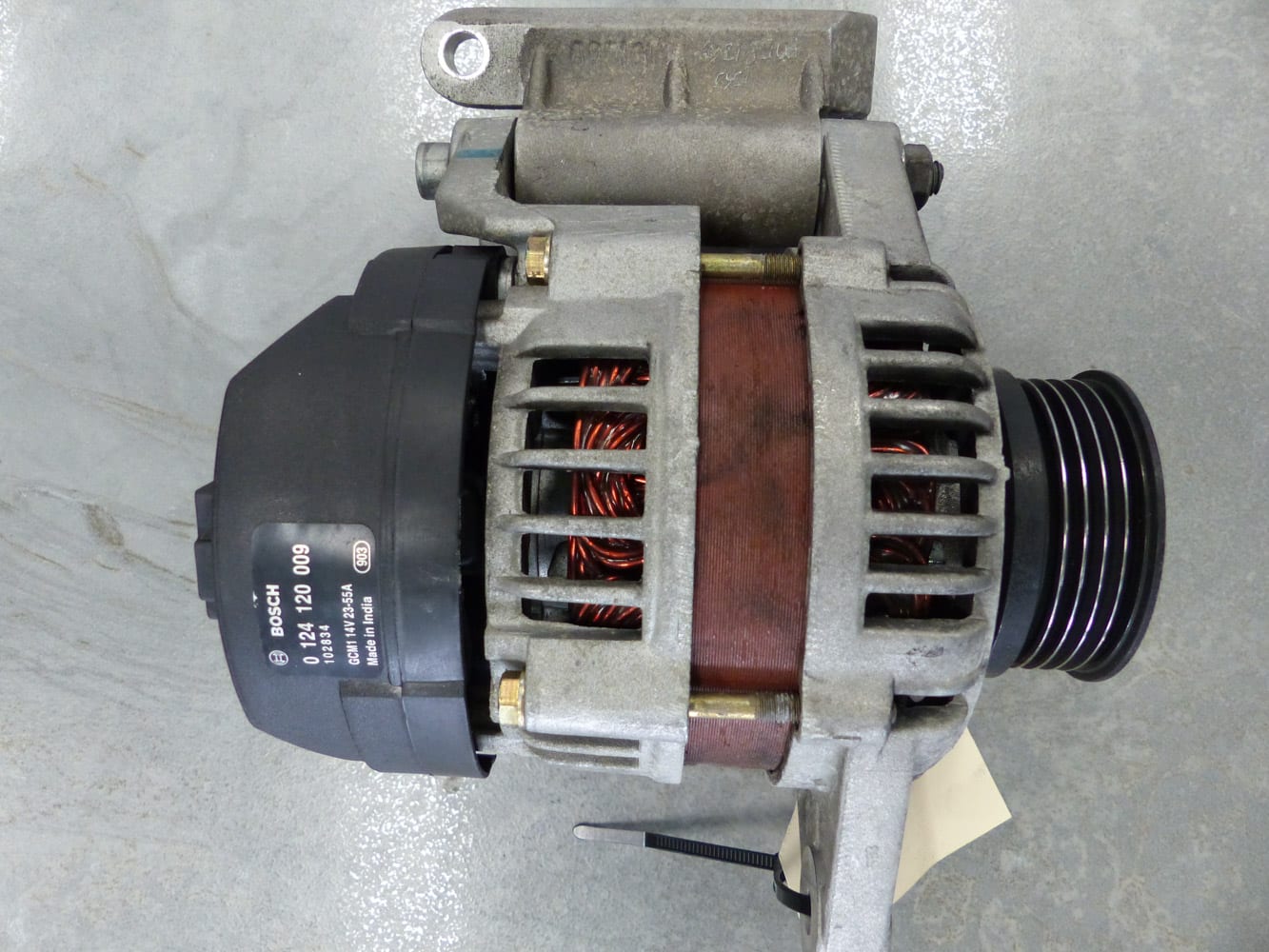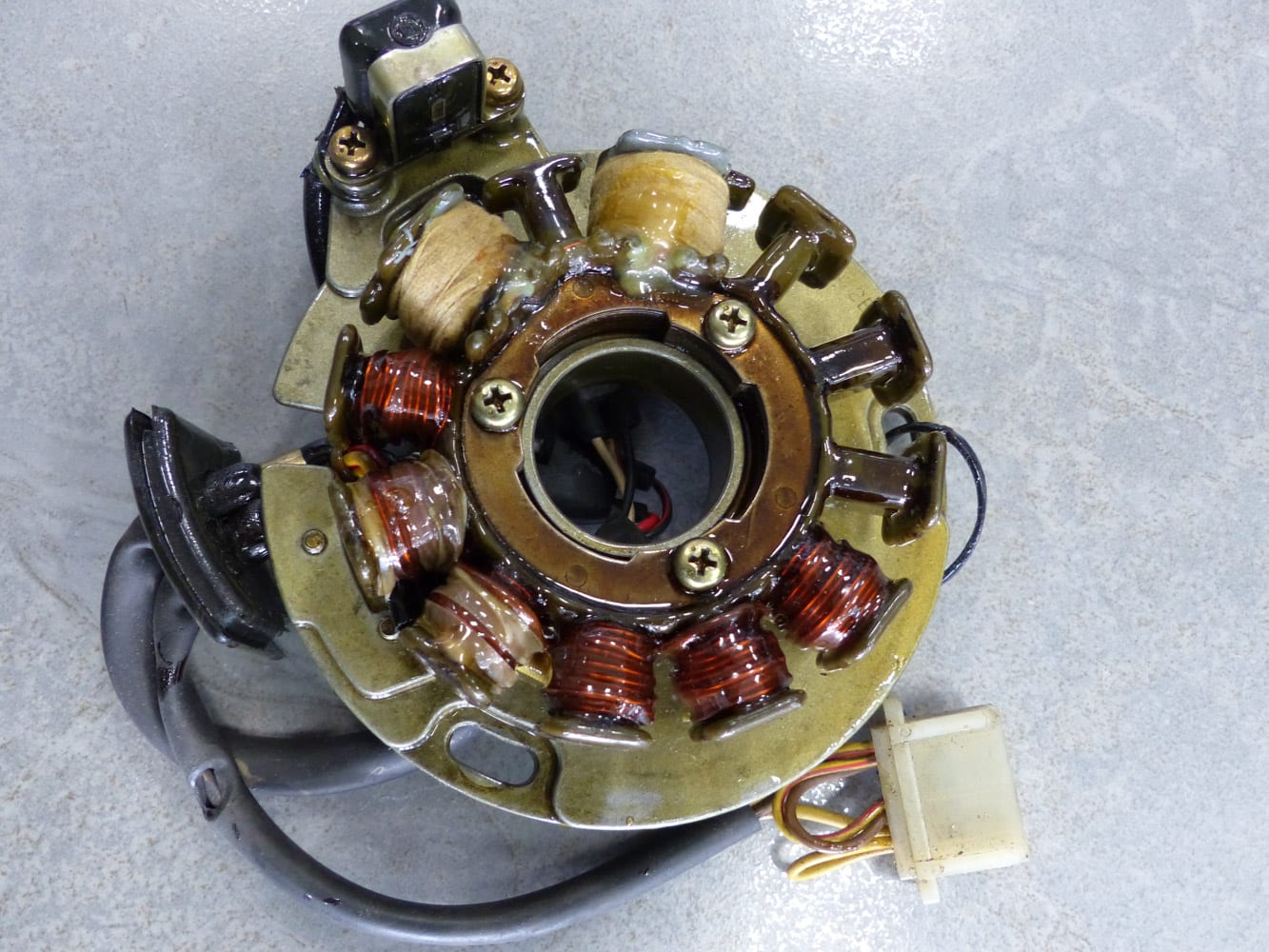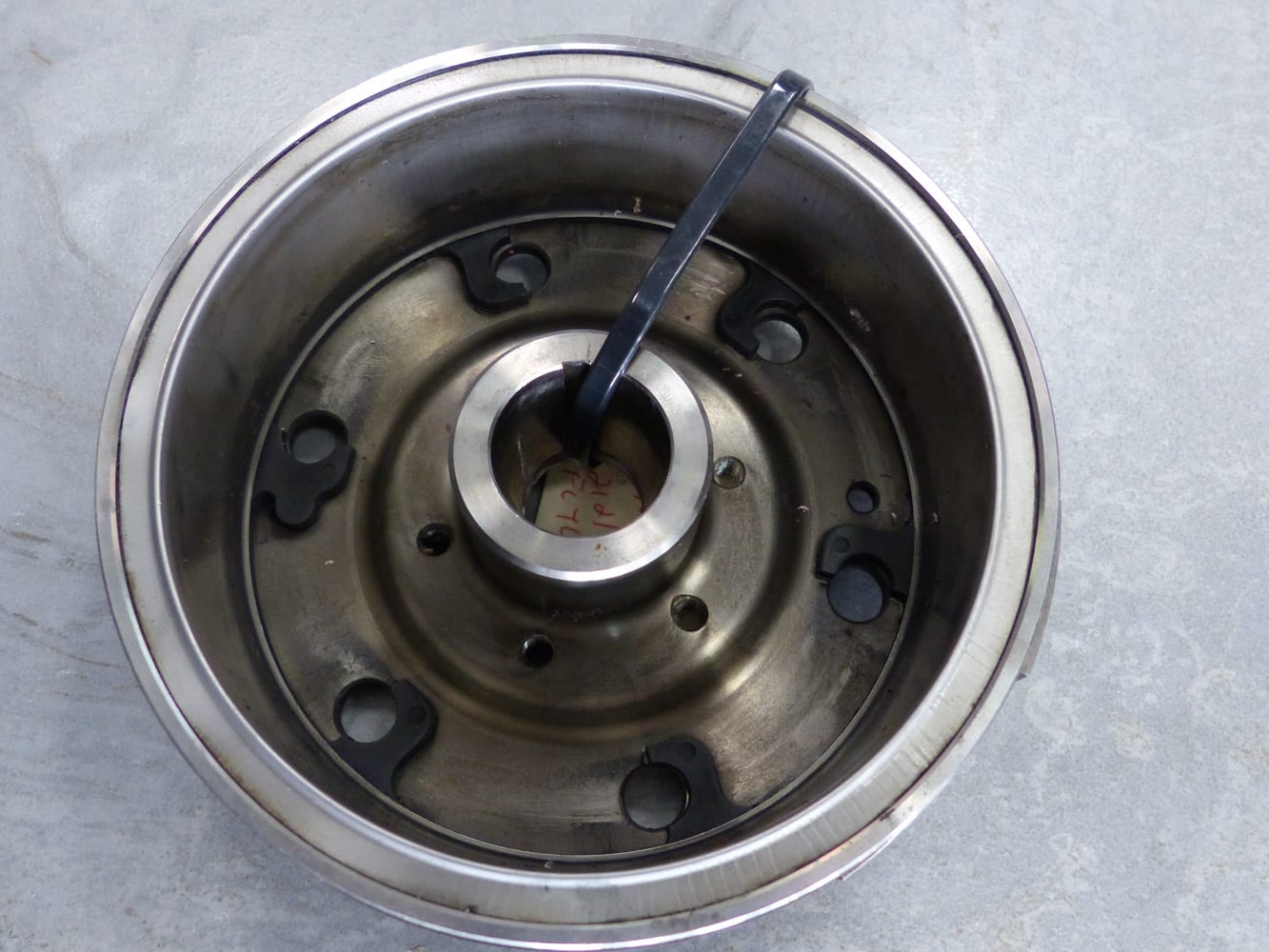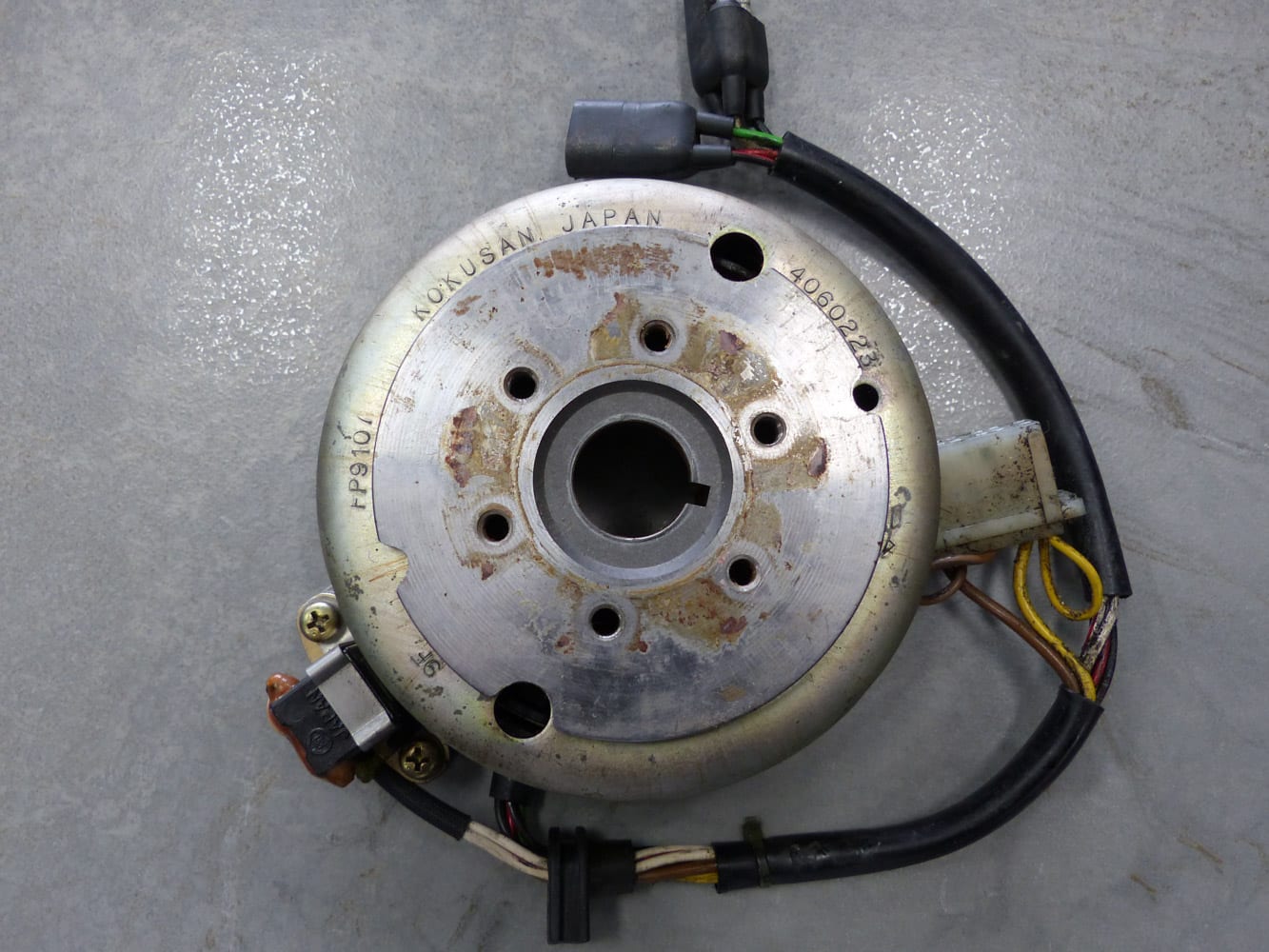The charging system of your snowmobile. For several years, the variety of accessories available to equip your snowmobile has been constantly evolving. Many are electric. Some improve performance and comfort, while others are more technological and reduce energy consumption. Add visors, insoles or a heated jacket and gadgets such as GPS. And let’s not forget the standard equipment that comes with your bike.¬†
Have you thought about the ability of your charging system to adequately provide the watts needed for these accessories?
A little history
When snowmobiles were first popularized in the 1970s, they were much less sophisticated than those of today. There were practically no modules or gadgets and especially no batteries. Ignition was mechanical with contacts activated by the movement of a lobe attached to the crankshaft. Gasoline was delivered to the carburetor by means of a diaphragm pump activated by the engine’s vacuum, so, unlike the modern snowmobile, no power was needed for it.
If we analyze, for example, a snowmobile from those years, the available current was very limited. Often, the charging system was reduced to 3 coils inside a magneto. A 75 watt coil for the front light, another 25 watt coil for the rear light and a last one for the engine ignition. So the total power available was about 100 watts, which gave a mere 8 amps. This 100 watts was only available when the engine was at near full throttle.
Considering that the demand by consumption was not very high there, these snowmobiles did not have equipment, battery, nor electric starter. The power demand was limited to a single 55 watt headlight mounted on the front grill and a 5 watt rear position light. We recall that the 100 watts available were only at full throttle. If the engine was running at idle, you would only have a meager 30 watts to power the light, which explains the poor performance of the headlight on these snowmobiles in certain conditions. If you have ever had the experience of checking the voltage produced by these snowmobiles with a multimeter, I am sure you were amazed. The voltage regulator on this charging system is extremely inaccurate. It simply flattens out the AC spikes produced by the windings and limits the over-voltage spikes. So if your multimeter’s selector switch is in the DC position, it will measure virtually nothing since the current is somehow alternating (AC). Remember, it is regulated, but not rectified.
Nowadays, most snowmobiles are equipped with a generator that offers 650 watts and sometimes more. In many cases, they will be equipped with a battery. It would be possible for manufacturers to replace the generators with alternators. This solution would be more powerful, but probably more expensive.

Alternator of a 4 stroke snowmobile.

Stator of a generator.

Flywheel

On modern snowmobiles, the charging system assembly consists of a set of 3 groups of fixed copper wire coils (represented by Y1, Y2 and Y3). Permanent magnets attached to the inside of the flywheel (represented by the circle) rotate around the coils. This movement produces an alternating current “AC” of typically 115 volts for each group of windings with the motor running at full speed. This data may differ slightly from one snowmobile manufacturer to another.

Since all snowmobiles operate on 12 volts DC, our output current from the coils must be transformed. Snowmobile manufacturers use a module that rectifies the alternating current into direct current and regulates it between 13.8 and 14.4 volts. This energy is then absorbed by the battery.

The Battery
The battery of your mount acts as an energy accumulator. When extra power is available, the battery stores it. This stored power is then available for times when the demand for power is greater than that produced by the generator.
A snowmobile battery can also be charged with a battery charger at 1.8 to 2 amps/hour for 5 to 10 hours. A too high power charge may damage your battery and may even result in an explosion of the battery.




Here are some technical data with the engine stopped.
- A 12.8 volt battery is 100% charged
- A 12.5 volt battery is 75% charged
- A 12.0 volt battery is 50% charged
- 11.5 volt battery is 25% charged
Imagine a ride with several accessories, with the engine frequently idling. It is possible that your battery will fall below 12 volts and refuse to start your snowmobile after a stop.
Did you know that?
The current needed to start the engine from cold below -15 degrees Celsius will require a minimum of 30 minutes of sustained use to recharge the battery from this consumption.
Let’s look at some basic electrical concepts
Often, the units of measurement advertised differ from one accessory to another. Most of the time, these measurements change from watts to amperes. In order to perform a calculation that makes sense, it is best to convert to a single unit of measurement. If we want to get the measurement from watt to ampere, here is the formula “watts divided by volts = amperes” Example: 500 watts divided by 13.8 volts = 36 amperes. Remember that the 500 watts measured on the snowmobile are with the engine at near full throttle.
After a test run, the engine at idle offers only a meager 125 watts, or 7.2 amps. This is very little, but as soon as the engine revolution increases, the available watts increase rapidly.
For your information, I measured with a multimeter the power consumption of some accessories often used or added to the snowmobile. These measurements will undoubtedly serve as a reference for you.
Here are the measurements obtained;
| Heated Driver’s Handles: | 3.2 amps for both (Kimpex) |
| Heated thumb | 0.29 amps (Kimpex) |
| Passenger’s heated grips : | 3.6 amps (Koso) |
| Confortech heated insoles: | 7 amps at maximum |
| Headlight : | 7.97 amps on high position |
| Brake light with 2 globes : | 1,2 amps |
| Heated glove: | 1,30 amps |
| Heated coat liner: | 6,52 amps |
| Heated visor: | 0,22 amps (CKX) |
A total of 30.22 amps at maximum usage if you have a complete set to plug in. Let’s add the consumption of the engine control modules as well as the recharging of the battery. We can see that a snowmobile must provide 417 watts to adequately power the accessories. Therefore, a snowmobile must have a minimum capacity of 600 watts of available power when all the accessories are at their maximum use.
Don’t forget the winch
If you own a utility snowmobile, it is not uncommon to see them equipped with a front or rear winch.
Although the bigger the better, I’m talking about the winch here! This is not entirely true. A high powered winch will require a very high power source in exchange. Unfortunately, the power of your load system will limit your winch. The bottom line is that a 4,000 pound winch running on an inadequate power source will pull the equivalent of a 2,500 or 3,000 pound winch with adequate power. So, it is important to add this calculation when purchasing a winch.
In the end
Although a large number of electrical accessories can enhance our winter outings, their performance must be optimal. Underpowered accessories will always give you poor performance and frustration. So for proper performance, don’t exceed your snowmobile’s ability to power its accessories. Stay reasonable!





